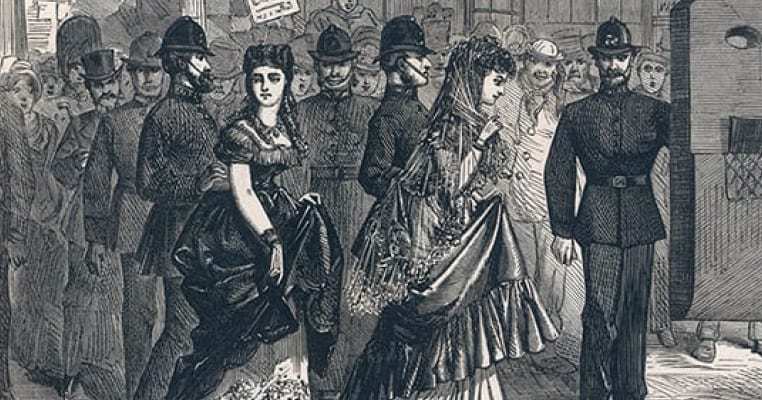On the morning of April 29, 1870, a crowd of over one thousand people gathered outside of the Bow Street Magistrate’s office to watch the spectacle. The police escorted Ernest Boulton and Frederick Park, two men from upstanding families, out of the magistrate’s building. Emerging with their heads held high, the men carefully stepped into the van that would bring them to jail. As the onlookers gasped in shock, there was one fundamental difference between Boulton and Park and any other prisoners: the men were wearing women’s clothes.
Frederick Park and Ernest Boulton, known as Fanny and Stella respectively, were two friends who bonded over their mutual love of cross-dressing, creating a successful stage show in London. In a sensational 1871 trial, the British government prosecuted Park and Boulton for sodomy, which was a capital offense. They were found not guilty, but the case shocked Victorian England because it forced the highly conservative society to acknowledge homosexuality for the first time publicly.

In the Victorian era, a strict moral code relating to sex and gender touched all corners of society. Any sexual orientation or activity outside the confines of heterosexual unions, such as homosexuality, was outlawed. Persecutions of members of the gay community increased, with ideas of homosexuality as an identity emerging by the end of the century. Underneath the surface of Victorian morality, London was the heart of the sexual underground where sex in all its forms was easy to find, and members of the gay community created a covert subculture.
Cross-dressing has particular roots in the theater: for hundreds of years, women were not able to perform onstage, so men would wear women’s clothes to play the female roles. Although women were eventually allowed to act onstage by the Restoration period of the end of the 17th century, this tradition of cross-dressing on stage experienced a resurgence in the nineteenth century in the form of burlesque. Victorian burlesque shows parodied traditional works of literature or theatre using erotic themes; both men and women engaged in cross-dressing on stage, with women dressed as men falling in love with other men, and men dressed as women falling in love with other women.

Both Frederick Park and Ernest Boulton had their hearts set on a career on stage, but their families had other ambitions for them. Boulton’s father pressured him to work in a bank; Park, the son of a judge, went to law school and worked in a lawyer’s office. After Boulton and Park met, they quickly became friends, creating a stage show around their female personas. The Fanny and Stella stage show toured the London circuit, becoming wildly successful, but there were certain parts of London where their show met with opposition: the men were thrown out of theatres many times for appearing in women’s clothes.

